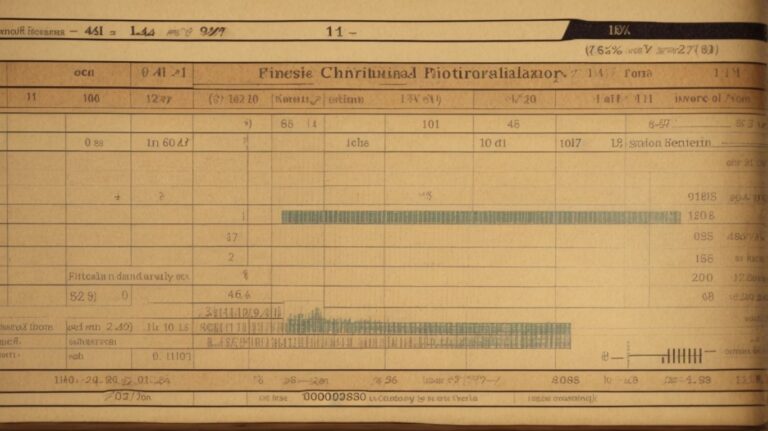Psychopathy is a complex and often misunderstood condition that has significant ramifications for both the individual affected and those around them. In this article, we will delve into the meaning of PCL in psychology, exploring the different types of PCL, the contributing factors, symptoms, diagnosis, and treatment options.
We will also address the question of whether PCL can be cured and provide guidance on how to cope with a loved one who has PCL. Understanding this condition is crucial for better management and support, so let’s dive in.
Contents
- 1 Key Takeaways:
- 2 What Is PCL in Psychology?
- 3 What Are the Different Types of PCL?
- 4 What Are the Factors That Contribute to PCL?
- 5 What Are the Symptoms of PCL?
- 6 How Is PCL Diagnosed?
- 7 What Are the Treatment Options for PCL?
- 8 Can PCL Be Cured?
- 9 How Can One Cope with a Loved One Who Has PCL?
- 10 Frequently Asked Questions
- 10.1 What does PCL stand for in psychology?
- 10.2 How is the PCL used in psychology?
- 10.3 Is the PCL the only tool used to assess psychopathy?
- 10.4 Can anyone administer the PCL assessment?
- 10.5 What are some factors that can impact the results of the PCL assessment?
- 10.6 Is the PCL assessment considered a definitive diagnosis of psychopathy?
Key Takeaways:
1. PCL, or Psychopathy Checklist, is a diagnostic tool used to measure levels of psychopathy in individuals.
2. There are three types of PCL: primary, secondary, and tertiary, each with their own set of contributing factors.
3. Symptoms of PCL include lack of empathy, manipulative behavior, impulsivity, and lack of remorse or guilt.
4. PCL can be diagnosed through careful assessment and evaluation by a trained mental health professional.
5. Treatment options for PCL include psychotherapy, medications, and behavioral interventions, but there is no known cure.
6. Coping with a loved one who has PCL can be challenging, and seeking support and setting boundaries can help in managing the relationship.
What Is PCL in Psychology?
The Posttraumatic Stress Disorder Checklist (PCL) in psychology refers to a standardized self-report measure used for assessing and diagnosing PTSD symptoms following exposure to a traumatic event.
The PCL serves as a valuable screening tool in identifying individuals who may be experiencing symptoms of PTSD. It covers a range of symptoms such as re-experiencing the traumatic event, avoidance, hyperarousal, and negative alterations in mood or cognition.
When administered, the PCL prompts respondents to rate the severity of various symptoms they’ve experienced over a defined period. This allows clinicians to gain insight into the nature and extent of the individual’s PTSD symptoms, aiding in diagnosis and treatment planning. The measure also supports the ongoing assessment of treatment progress and the effectiveness of interventions.
What Are the Different Types of PCL?
The different types of PCL include the PCL-5, PCL-C, PCL-M, and PCL-IV, with each version undergoing changes related to factor structure, addressing limitations, and mitigating biases for accurate PTSD assessment.
Primary PCL
The primary PCL, particularly the PCL-5, serves as a critical tool for clinicians to assess the severity of PTSD symptoms, aiding in the provisional diagnosis and informing treatment decisions.
As a self-report questionnaire, the PCL-5 encompasses twenty items that correspond to the DSM-5 diagnostic criteria for PTSD.
Clinically, it efficiently captures the diverse range of symptoms while evaluating the impact they have on an individual’s daily functioning. This comprehensive assessment enables clinicians to gain insight into the specific symptoms experienced by the individual, guiding them in formulating tailored treatment plans, monitoring the progress, and making necessary adjustments along the way.
Secondary PCL
The secondary PCL, particularly the PCL-5, involves the scoring and administration processes, emphasizing the changes in factor structure for improved PTSD assessment.
The PCL-5 scoring system consists of 20 items, each evaluating the intensity of a PTSD symptom using a 5-point Likert scale (0-4). Individuals self-report their experiences, with clear instructions and examples provided for accurate responses. It’s worth noting that the PCL-5 factor structure has been updated to align with DSM-5 criteria, making it more sensitive in detecting PTSD symptoms.
Tertiary PCL
The tertiary PCL, particularly the PCL-5, revolves around the interpretation and administration of the measure, acknowledging its limitations in certain contexts.
When interpreting the PCL-5, clinicians evaluate the severity of symptoms related to post-traumatic stress disorder (PTSD). Its administration involves a structured interview or self-report questionnaire.
Clinicians carefully consider the individual’s responses, as the scoring system provides insight into the presence and intensity of PTSD symptoms. Limitations may arise when using the PCL-5 in non-Western cultures or diverse populations, requiring cultural sensitivity and adaptation.
The measure may not capture the full spectrum of trauma experiences, urging professionals to supplement with additional assessments.
What Are the Factors That Contribute to PCL?
Several factors contribute to PCL, including genetics, environmental influences, and childhood experiences, shaping an individual’s susceptibility to PTSD symptoms.
Genetics play a significant role in the development of PCL. Research suggests that certain genetic variations may increase the likelihood of experiencing PTSD symptoms after a traumatic event.
Environmental influences, such as exposure to violence, natural disasters, or combat, can also have a profound impact on an individual’s PCL vulnerability. Childhood experiences, including abuse, neglect, and severe stress, can imprint lasting effects on the brain, potentially elevating the risk of developing PTSD later in life.
Genetics
Genetics plays a significant role in contributing to PCL, influencing an individual’s susceptibility to PTSD symptoms and highlighting the hereditary aspects of PTSD risk.
Research has shown that variations in certain genes can impact how an individual responds to traumatic events, affecting the development and severity of PTSD symptoms.
These genetic predispositions can influence an individual’s biological stress response, altering their ability to regulate fear and anxiety.
Familial studies have indicated a strong hereditary component in the risk of developing PTSD, underlining the impact of genetic factors in shaping an individual’s resilience or vulnerability to trauma.
Environment
Environmental factors, including trauma and stressors, contribute significantly to PCL, shaping an individual’s response to PTSD symptoms based on their environmental exposures.
These factors can lead to biological and psychological changes in a person, influencing the development and severity of PCL.
Trauma, such as physical or emotional abuse, violence, or natural disasters, can have lasting effects on an individual’s mental well-being, potentially triggering or exacerbating PTSD symptoms. Chronic stressors, such as financial hardships, job-related pressure, or strained relationships, can contribute to an increased vulnerability to PCL.
Childhood Experiences
Childhood experiences, particularly adversity and trauma, contribute significantly to PCL, shaping an individual’s susceptibility to PTSD symptoms based on their early life encounters.
Research has shown that adverse childhood experiences can impact the development of the brain, leading to alterations in stress response systems and increasing the risk of developing PTSD later in life.
Exposure to trauma during crucial developmental stages can disrupt the process of emotional regulation, affecting the individual’s ability to cope with stress and adversity. The enduring impact of childhood experiences can influence the individual’s cognitive patterns and emotional processing, leading to heightened vulnerability to PTSD symptoms.
What Are the Symptoms of PCL?
The symptoms of PCL, particularly those assessed by the PCL-5, encompass a range of manifestations such as lack of empathy, manipulative behavior, impulsivity, and lack of remorse or guilt.
Individuals exhibiting these symptoms may display a callous and unemotional demeanor, often showing little concern for the feelings of others. Their manipulative behavior can involve deceit and exploitation for personal gain, while impulsivity may lead to risky actions without consideration of consequences.
The lack of remorse or guilt may be evident in their disregard for the impact of their actions on others, leading to a pattern of harmful and destructive behaviors that can significantly affect their relationships and interactions with society.
Lack of Empathy
The symptom of lack of empathy, as assessed by the PCL-5, involves emotional detachment and an inability to connect with the emotions of others, often indicative of PTSD-related manifestations.
This difficulty in understanding and sharing the feelings of others can lead to strained relationships, impaired social interactions, and decreased ability to provide support.
Individuals exhibiting these symptoms may struggle with recognizing non-verbal cues and have difficulties stepping into the shoes of others. This lack of empathy can exacerbate the emotional and psychological distress experienced by individuals with PTSD, contributing to their challenges in overcoming the traumatic experiences.
Manipulative Behavior
Manipulative behavior, assessed as a symptom by the PCL-5, pertains to the use of manipulative tactics in interpersonal relations, often linked to PTSD-induced behavioral patterns.
This behavior can encompass a range of tactics, including deception, manipulation, and exploitation of others for personal gain or to maintain control. Individuals exhibiting such behavior may display a lack of empathy or guilt, and often engage in deceitful and cunning actions.
The PCL-5, a widely used tool for assessing PTSD, includes items specifically related to manipulative behaviors, such as ‘deceitfulness’ and ‘irresponsibility’. This association underscores the significant impact of PTSD on behavioral patterns, including manipulative tendencies.
Impulsivity
Impulsivity, as a symptom evaluated by the PCL-5, involves engaging in rash decisions and risk-taking behaviors, often reflective of PTSD-related manifestations.
Individuals with PTSD may exhibit impulsive behaviors such as substance abuse, aggression, or risky sexual activities, which can be detrimental to their well-being.
The PCL-5, a standardized assessment tool for PTSD, specifically includes items related to impulsivity to gauge the severity of this symptom. Impulsivity can lead to financial instability, strained relationships, and legal troubles, highlighting the importance of addressing this aspect of PTSD.
Managing impulsivity in PTSD patients can improve overall functioning and quality of life.
Lack of Remorse or Guilt
The symptom of lack of remorse or guilt, as evaluated through the PCL-5, involves emotional numbness and moral distress, signifying PTSD-related manifestations in affected individuals.
Emotional numbness is a common symptom of PTSD, which can hinder an individual’s ability to feel empathy and remorse. This detachment from emotions can result in moral distress, where the person experiences a conflict between their internal moral compass and their actions. This can be problematic as it may lead to a compromised sense of accountability and guilt, which can contribute to a lack of remorse or guilt in the evaluation of PCL-5.
How Is PCL Diagnosed?
PCL is diagnosed using standardized assessment tools such as the PCL-5, in accordance with the diagnostic criteria outlined in the DSM-5, typically administered by a qualified clinician.
The PCL-5 is a self-report measure that consists of 20 items and is used to assess the presence and severity of PTSD symptoms according to the DSM-5 criteria. Clinicians often use structured interviews and other assessments to confirm the diagnosis.
It is crucial that the individuals administering the PCL-5 are trained and qualified in its use to ensure accurate results. The assessment process also involves considering the frequency and intensity of symptoms over time to form a comprehensive understanding.
What Are the Treatment Options for PCL?
Treatment options for PCL, including those assessed using the PCL-5, encompass psychotherapy, medications, and behavioral interventions, tailored to address PTSD symptoms and improve overall well-being.
Psychotherapy involves cognitive behavioral therapy (CBT) and eye movement desensitization and reprocessing (EMDR) to help individuals process traumatic memories and reduce distress.
Medications, such as selective serotonin reuptake inhibitors (SSRIs) and prazosin, are used to alleviate symptoms of anxiety and nightmares.
Behavioral interventions, like stress management techniques and mindfulness practices, aim to regulate emotional responses and promote relaxation.
It’s crucial to match the treatment to the specific needs of the individual, considering factors such as symptom severity, co-occurring conditions, and personal preferences.
Integration of these modalities forms a comprehensive treatment plan that addresses the multifaceted nature of PTSD and fosters recovery.
Psychotherapy
Psychotherapy serves as a fundamental treatment modality for PCL, involving trauma-focused and cognitive-behavioral therapy approaches to address PTSD symptoms assessed using the PCL-5.
Trauma-focused therapy aims to help individuals process and make sense of traumatic experiences, reducing the impact of PTSD symptoms. This therapy typically involves techniques such as exposure therapy or eye movement desensitization and reprocessing (EMDR).
Cognitive-behavioral therapy (CBT) focuses on identifying and changing negative thought patterns and behaviors associated with PTSD. It can help individuals develop coping strategies and behavioral skills to manage symptoms and improve overall well-being.
Medications
Medications, as a treatment avenue for PCL, involve pharmacotherapy with antidepressants and other medications aimed at alleviating PTSD symptoms assessed using the PCL-5.
Antidepressants, such as selective serotonin reuptake inhibitors (SSRIs) and serotonin-norepinephrine reuptake inhibitors (SNRIs), are commonly prescribed for individuals with PCL to address symptoms like anxiety, depression, and hyperarousal.
These medications work by altering the levels of neurotransmitters in the brain, providing relief from distressing symptoms. Antipsychotic medications may be utilized in some cases where there is a significant presence of psychotic symptoms or severe dissociation. These medications are often used in conjunction with therapy to provide comprehensive support for individuals dealing with PCL-related challenges.
Behavioral Interventions
Behavioral interventions form an integral part of PCL treatment, encompassing exposure therapy and stress management techniques to address PTSD symptoms assessed using the PCL-5.
Exposure therapy, a key component of behavioral interventions, involves gradually exposing individuals to traumatic memories or situations to help reduce fear and anxiety. This form of therapy aims to address avoidance behaviors and desensitize the individual to their triggers.
Stress management techniques, such as mindfulness-based strategies and relaxation exercises, play a crucial role in regulating emotional responses and reducing hyperarousal commonly associated with PTSD. These interventions not only target the core symptoms of PTSD, but also promote adaptive coping strategies, fostering long-term resilience and recovery.
Can PCL Be Cured?
While PCL cannot be ‘cured’ in the traditional sense, effective management and coping strategies, often informed by PCL-5 assessments, can significantly alleviate PTSD symptoms and improve quality of life.
The outlook for curing PCL revolves around the development of improved management and coping strategies. These strategies can be tailored to the individual’s needs based on PCL-5 assessments. These assessments provide valuable insights into the specific PTSD symptoms experienced. This enables healthcare professionals to devise personalized intervention plans.
By integrating evidence-based techniques and therapies, such as cognitive-behavioral therapy (CBT) and eye movement desensitization and reprocessing (EMDR), individuals with PCL can experience a reduction in symptoms and an enhancement in their overall well-being. Lifestyle modifications, such as regular exercise, mindfulness practices, and maintaining a strong support system, can also play a crucial role in managing PCL effectively.
How Can One Cope with a Loved One Who Has PCL?
Coping with a loved one who has PCL, as assessed using the PCL-5, involves providing empathetic support, open communication, and a deep understanding of their experiences and symptoms.
Empathetic support entails being present for your loved one, actively listening to their concerns, and offering encouragement.
Creating a safe space for open communication allows them to express their feelings without judgment or fear of invalidation. Understanding their experiences and symptoms requires educating yourself about PCL, seeking professional guidance, and being patient and compassionate as they navigate their challenges.
Frequently Asked Questions
What does PCL stand for in psychology?
PCL stands for Psychopathy Checklist, which is a diagnostic tool used to assess psychopathy in individuals.
How is the PCL used in psychology?
The PCL is used by psychologists and researchers to evaluate an individual’s level of psychopathy, which includes traits such as manipulation, lack of empathy, and impulsivity.
Is the PCL the only tool used to assess psychopathy?
No, there are other tools and assessments used in psychology to evaluate psychopathy, such as the Hare Psychopathy Checklist-Revised (PCL-R) and the Diagnostic and Statistical Manual of Mental Disorders (DSM).
Can anyone administer the PCL assessment?
No, the PCL assessment should only be administered by trained professionals in the field of psychology, as it requires specific knowledge and expertise to accurately interpret the results.
What are some factors that can impact the results of the PCL assessment?
There are several factors that can affect the results of the PCL assessment, including the individual’s age, cultural background, and level of cooperation during the assessment.
Is the PCL assessment considered a definitive diagnosis of psychopathy?
No, the PCL assessment is just one piece of the puzzle in diagnosing psychopathy. It should be used in conjunction with other assessments and information gathered from clinical interviews and observation to make a comprehensive diagnosis.




